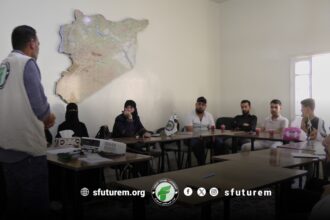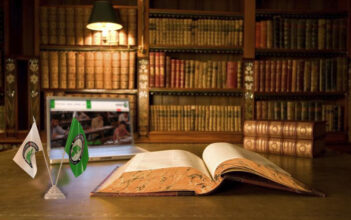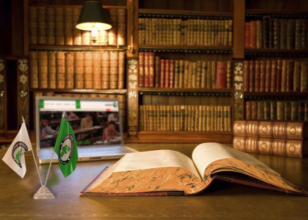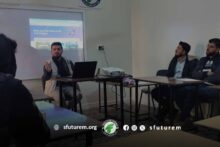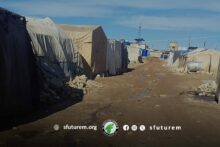Trilogy of Solutions, and the Question of Dividing Syria, the Most Viable Solution!

The international envoy to Syria, Geir Pedersen, openly declared that the course of events in Syria is not progressing, and his words were a warning against the return of conflict. However, he affirmed with every letter he uttered that the Syrian situation is petrified with no prospect for any solution to penetrate.
Thus, a political solution is impossible. This is the real final word and the hidden pivot in his statement.
Before this, the Arab League tried to rehabilitate Bashar al-Assad through a ministerial committee, but soon stopped because the Syrian situation is petrified, impervious to any solution.
Turkey, Russia, and Iran also tried with the Sochi and Astana agreements to undermine the Geneva accords and their resolutions, attempting to float Assad or reach a Syrian-Syrian settlement and reconciliation, but they collided with the rock of Syrian immobility.
Meanwhile, Lebanon is attempting to coerce the Syrian regime to accept its people by bullying at times, and by forcibly deporting Syrians from its territory at other times, but the Syrian regime insists on creating a homogeneous populace submissive to the measurements of its intelligence boots.
Also, many mediators have sought what they call a “safe, neutral environment” to start an early recovery that reinstates the Syrian state’s centrality by convincing Bashar al-Assad to undertake real reforms. Yet, he changed hats and played with the terminology of the ruling party instead of the leader, called his people bulls, and made his party and security leadership predominantly Alawite!
In the autonomous administration areas, the Syrian Democratic Forces are armed with the latest American weapons, drafting constitutions and laws, and mandating military conscription, making their disbandment difficult. The launch of the Turkish summer war is now limited by the Qandil mountains and Iraq, and to pull the rug from under those who accuse the autonomous administration of secession, they cleverly stepped toward agreeing on the three-zone document!
As for the southern regions, they await the fall of Netanyahu’s government to announce the launch of the safe zone under Jordanian-American sponsorship.
In the northwest, the interim government establishes its foothold with a Turkish plough to build foundations based on the Turkish currency and language, which will remain for decades.
Idlib has become a land of a modified version of Al-Qaeda, with Abu Mohammad al-Julani’s tenure now more crucial to the U.S. than Bashar al-Assad’s is to Russia, as he managed to domesticate jihadist thought within Idlib’s borders, engaging the jihadists with malls, money laundering, and those who resist meet the fate of the Guardians of Religion group, and good riddance to them, martyred for the cause!
Therefore, the current picture is as follows:
- Today, Syria contains four different regions, each with its own government and internal laws.
- There is no political solution that unites the four governments into one, as the de facto powers (Assad regime, SDF, Salvation, and Interim) do not accept each other and have no desire to compromise.
- The Syrian regime alone has the element of legal recognition as the representative of the Syrian state.
This tripartite structure imposes three solutions:
The first solution: Maintain the status quo, as the external intervening states will not allow their gains to be lost and agree to distance conflict and war among them in Syria, meaning there is no desire, ability, or endeavor for one side to triumph over another. Therefore, with the absence of a complete political solution, the situation will remain as it is until Bashar al-Assad’s death or removal at the very least, for even if he remains until the next presidential elections in three years, nothing will change due to the Syrian regime’s refusal to share power with the other three parties.
The second solution: Victory of one party over the others, including the possibility of an agreement between the governments outside the Syrian regime’s control if they agree on and activate the three-zone charter, for instance, ushering Syria into a new era that transcends the political solution towards establishing a new governance with different tools and manifestations.
The third solution: Success of all parties to be on equal legal footing, meaning that they are responsible for their regions as independent existing states, thus dividing Syria into four countries, allowing demographic changes for anyone wanting to move to the place they deem suitable: Islamists to Idlib, secularists to eastern Syria, revolutionaries to the northwest, and Assad loyalists to the remaining areas, unless Jordan helps establish a special southern Syrian zone with the Tanf base to create a fifth state merging Arabs and Druze in Daraa and Suwayda!
The question now: Which solution is best?
Aside from the political solution in line with the Geneva accords, which has become impossible, is maintaining the status quo good?
Answer: Possibly, as Syrians have coexisted with the circumstance, but an important issue will impose its movement, namely the refugee issue in Jordan
, Lebanon, and Turkey, and internationally shifting the status quo, as how will Lebanon send opponents north without recognizing another Syrian government besides Assad’s?
As for one side triumphing over another, which is the second solution, this would mean a change in international agreements, which is a remote possibility.
Thus, only the third solution remains, working on dividing Syria and securing international recognition for each government as representing an independent state with one people, one geography, and one sovereignty, whether each state has its own name, or Syria remains the collective name, but each government is recognized confederally, federally, or by any legal decree.
In conclusion, we must differentiate between wishful thinking and realities, between reality and expectations, between fantasy and truth, between hope and the possible.. To clarify the following:
Most Syrians hold a national, civil, democratic illusion and hope, and from this desire, expectation, and hope, we anchor our intellectual, political, civilian, and educational efforts.
But we need to reassess reality and explore what is possible to balance the options, for neither the static solution that keeps the Syrian situation as it is; is good.
Nor do we advocate for arming either above or below the table and returning to the bloody battles that take Syrian lives and burden them beyond their capacity.
Therefore, the division of Syria is the disgusting reality and the hateful possibility!
Perhaps Syrians will return to their country, each to the region they see fit, freeing themselves from the slavery of refuge in countries that have wiped their dignity on the ground, and let each visionary build his country as he loves, sees, and desires.
To get rid of the national guilt complex, let us take a historical dose of Syria’s true borders that include Palestine, Jordan, Beirut, Tripoli, Baalbek, Akkar, the Golan, and the Liwa Iskenderun.. as these regions have been detached since 1920, and we have coexisted, so perhaps we can coexist with the reality of dividing Syria into four states! And perhaps with this, we move from the phase of destruction to the phase of building on what is existing until something opposes or succeeds it.
And so as not to collide with the impossibility of this solution, let’s pave its way (as in our study).
Finally, we in the Syrian Future Movement will remain faithful to our imagination and national hope for a unified Syria, stemming from our deep belief that the Syrian people are one, but in the Research and Studies Department, we try to break the ice and write for history, paving the way for decision-makers, and drawing a path among the paths.
Jomaa Mohamad Laheep
Scientific Office
Research and Studies Department
Articles
Syrian Future Movement (SFM)
